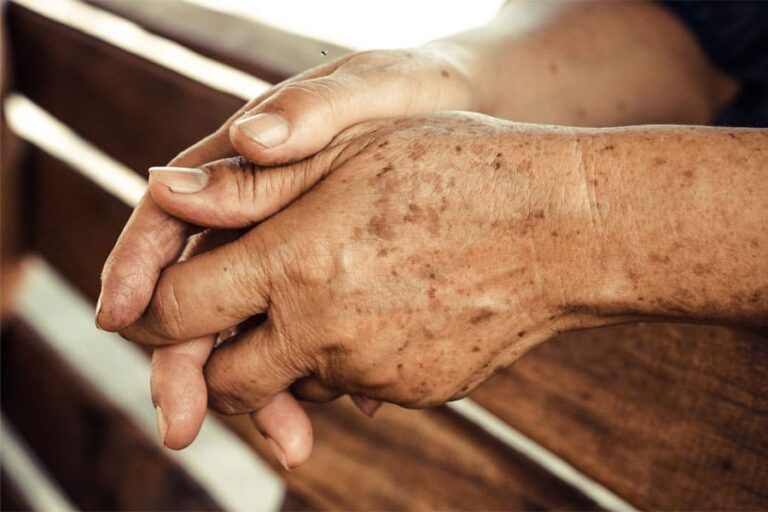
Proper care for bedridden individuals plays a vital role in improving their overall well-being and enhancing their quality of life. To maintain hygiene and reduce the risk of pressure sores, it’s important for family members or home care personnel to learn how to carefully change bed linens and clothing, carrying out these procedures as gently as possible.
Methods for Changing Bed Linen
It is recommended to use cotton bedding, as natural fabrics are hypoallergenic, breathable, and withstand high-temperature disinfection or chemical treatment well.
Soiled items should be collected separately before washing. The most effective cleaning method is boiling the linens with bleach or using phenol-based disinfectant solutions.
Bed linens should be changed at least once every three days. In case the person has chronic illnesses, increased perspiration and oil gland activity make more frequent linen changes necessary to maintain cleanliness.
There are two main methods for changing bed linens: longitudinal (side-to-side) and transverse (top-to-bottom). Before beginning either method, perform basic hygiene and dress the patient in clean, natural-fiber clothing.
Step-by-Step Guide for Changing Bed Linen
-
Inform the patient about the upcoming procedure.
-
Place a waterproof sheet under the patient to protect the mattress.
-
Clean the skin with a damp sponge.
-
Dry the skin carefully.
-
Dress the patient in fresh, breathable clothing.
-
Replace the bedding with clean linens.
Longitudinal Method
This method is used when the patient can turn onto their side. It is commonly employed for individuals with neurological or cardiovascular conditions, or joint diseases that do not cause acute pain during movement. Although one person can perform the task, having an assistant increases safety.
Steps:
-
Roll a clean sheet lengthwise, leaving one edge unfolded.
-
Help the patient turn on their side and move toward the bed’s edge.
-
Roll the soiled sheet inward toward the patient’s back.
-
Unroll the clean sheet toward the center.
-
Reposition the individual onto their back, then carefully turn them onto the opposite side.
-
Remove the dirty sheet and fully unroll the clean one.
-
Support the patient’s head and replace the pillowcase; fluff the pillow to restore its shape.
-
Finally, change the duvet cover.
Transverse Method
This method is used when turning the patient is not possible, such as after major surgery or when movement causes severe pain. An assistant is required.
Steps:
-
Roll the clean sheet widthwise, leaving one edge loose.
-
With assistance, lift the upper body.
-
Roll the soiled sheet toward the bed’s center and unroll the clean one from the head to the middle.
-
Replace the pillowcase and fluff the pillow.
-
Gently lower the patient’s upper body back onto the bed.
-
Then raise the pelvis to remove the rest of the dirty sheet and extend the clean one.
-
Smooth the sheet and tuck it under the mattress.
-
Complete the process by changing the duvet cover.
How to Change Undergarments
Changing clothing is best done during the bed linen replacement process. The patient’s clothing should be soft, comfortable, and free of harsh seams. Ensure clothes are well-ironed and prepared in advance.
Steps:
-
Gently remove the blanket and undo all fasteners.
-
Raise the patient’s pelvis and roll up the shirt from the back.
-
Ask the patient to lift their arms and remove the shirt from front to back.
-
Take off the trousers from the stronger leg first, followed by the weaker side.
-
To dress, begin with the affected arm: bunch the sleeve, reach through, gently grasp the patient’s hand, and guide the arm through.
-
Repeat the process for the healthy arm.
-
Ask the patient to slightly lift their shoulders and head while pulling the shirt over the back of the neck.
-
Smooth the clothing to eliminate wrinkles.
-
Pants should be put on in the same way—starting with the affected leg to minimize discomfort.
Consider Professional Help
Providing full-time care for a bedridden loved one can be challenging. In many cases, placing a relative in a specialized care facility may be the best solution. These residences provide 24/7 care, including hygiene assistance, feeding, medication management, linen changes, and leisure activities—ensuring a safe, supportive, and dignified environment for recovery and daily living.



